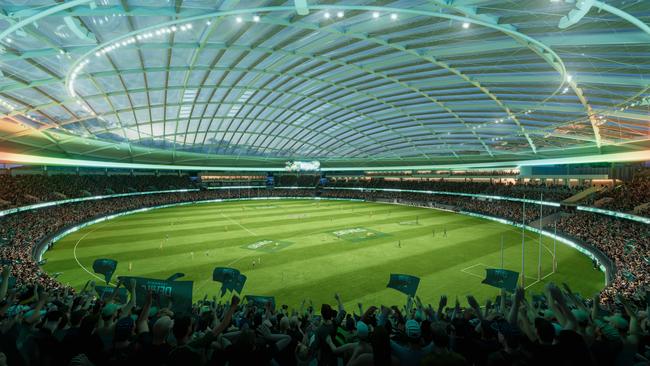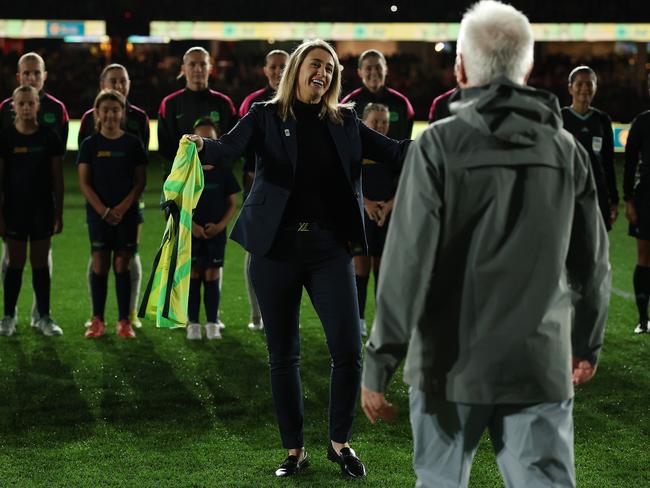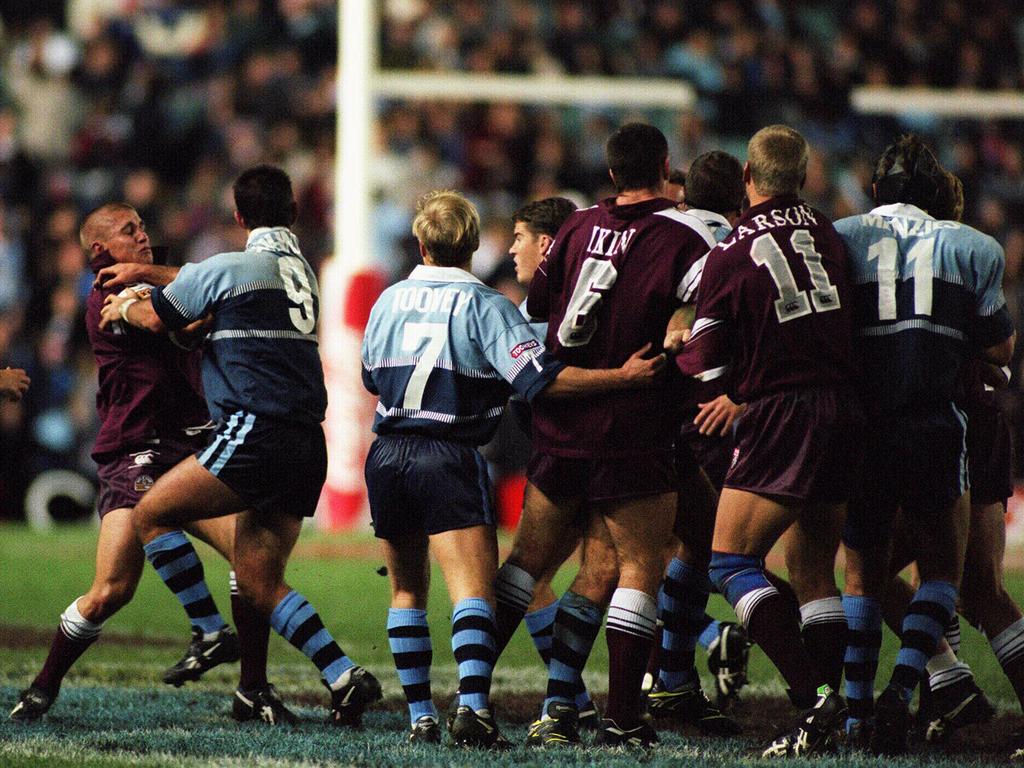What is Meninga doing joining a mess like the Perth Bears?
The NRL legend is the only plus for the expansion club that lacks infrastructure and rugby league IQ.

Why on earth would Mal Meninga, a rugby league legend with absolutely nothing to prove, want to coach the Perth Bears?
There’s no question the 64-year-old is joining the franchise for the right reasons, firm in the belief that rugby league can make some noise in the AFL stronghold.
But there are so many spiders crawling all over this hastily conceived concept that it’s starting to resemble a scene from Arachnophobia.
It’s less than five months until the team needs to dive headfirst into the player market on November 1 but, as it stands, has only appointed chief executive Anthony De Ceglie, a media man who knows nothing about the NRL let alone starting up a new football club.
He does, however, have a good relationship with ARL Commission chair Peter V’landys. Tick!
So far, they don’t have an all-important general manager of football (the NRL should throw the bank at Bulldogs boss Phil Gould), a gun recruitment manager, or the capable assistant coaches Meninga will need.
You can’t dismiss Big Mal’s coaching credentials, having led Queensland and Australia on successful runs, but he’s not accustomed of the grind of the NRL.
His stature means he can be for Perth what Kevin Sheedy was to the GWS Giants when they entered the AFL premiership in 2012, but people seem to forget how much runway the Giants had before they played their first match that season.
Among the first figures GWS appointed was AIS/AFL Academy coach Alan McConnell in 2009 as the club’s high-performance manager.
Sheedy was appointed later that year, with Mark Williams, who had coached Port Adelaide to the flag in 2004, his assistant.
The Giants were then afforded every advantage necessary to make the club work, including a ridiculous number of early draft picks, and $1m above the salary cap. The NRL doesn’t have a draft, and the Bears won’t be gifted salary cap exemptions.
Furthermore, players who join the Papua New Guinea franchise, which is apparently entering the premiership in 2028, won’t have to play tax.
Apart from the AFL’s bottomless pit of money, what the Giants mostly had was time.
They played in the 2011 TAC Cup and Northeast Australian Football League before entering the AFL the following year.
It was a grown-up way of doing business, instead of rushing in a franchise to bump up the price of the next broadcast deal.
Meninga’s appointment was confirmed on Friday morning.
It was interesting to learn that Roosters and NSW assistant coach Matt King was also Perth-bound. The whole thing was news to his manager when I spoke to him this week, who said he hadn’t spoken to anyone from the NRL.
Sounds about right.
AFL’s shamelessness
The reason the Tasmania Devils Football Club is headed for the exit like the carnivorous marsupial it’s named after has less to do with state politics and everything to do with the AFL.
Its shamelessness in asking the Australian taxpayer to continually foot the bill for its sporting infrastructure is matched only by that of the NRL. At least the AFL regularly fills its seats.
The AFL got what it wanted when the Crisafulli government in Queensland agreed to build a 63,000-seat stadium at Victoria Park to be shared with cricket once the 2032 Olympic Games end.
But they’re not so accommodating in Tasmania after a vote of no confidence in Liberal Premier Jeremy Rockliff was upheld on Thursday because he wanted to push through with a new stadium at Hobart’s Macquarie Point – a non-negotiable condition of the Devils entering the AFL premiership in 2028.

The problem isn’t the stadium so much as the design: a 23,000-seat arena with a non-retractable roof that will make it impossible to play cricket there in summer because of the shade it will cast across the pitch.
Total cost: $945m, up from its previous figure of $775m, with $375m coming from the Tasmanian taxpayer and $240m in federal funding.
Private investors will make up the shortfall.
In other words, a billion-dollar “boutique” stadium with a capacity of 23,000 that services just one sport that’s mostly funded with public money.
Bargain!
It’s been suggested to me that AFL officials attended a match in Tasmania in the dead of winter some years ago and from that day forward insisted a roof for any future stadium for any future team was also non-negotiable.
That doesn’t work for Cricket Australia, whose representatives told Rockliff earlier this year they didn’t want a roof, which adds between $120m to $150m to the construction bill.
Cricket doesn’t want a weird dome because the shadows it casts don’t work for broadcasters nor batters trying to pick up a new-ball thunderbolt.
Tasmanian politics might have strangled this deal, but the AFL’s continual threats about pulling the franchise has clearly peeved the people who will have to pay for it.
It was effectively holding a gun to the heads of the Tasmanian parliament and its constituents.
Most of the bleating about how this has played out has come out of Melbourne.
“If they’re going to roll the Premier, all bets are off!” Eddie McGuire, speaking like he’s already taken his seat on the AFL Commission, declared this week.
If not Tasmania, then where?
Darwin and Cairns have been mooted before but don’t dismiss the idea of a second Brisbane team in the booming western suburbs out to Ipswich and beyond. The NRL thinks it’s won the Battle of Brisbane. The number of boots the AFL has on the ground in the region suggests it’s not over.
Testing, Testing …

No additional security will be in place in the Lord’s Long Room for the World Test Championship final between Australia and South Africa, starting on Wednesday.
Yes, I’m very concerned, too, that things could get completely out of hand like they did during the second Ashes Test at the same venue in 2023 when several lilywhite men said some very cranky words to our cricketers following wicketkeeper Alex Carey’s controversial – but entirely legal – stumping of Jonny Bairstow.
In all seriousness, there’s more chance of Australian supporters fighting themselves at Lord’s, a neutral venue as was The Oval when it hosted Australia’s victory over India two years ago.
Pat Cummins’s team has lost just three Test matches since those heady Long Room scenes in 2023, and another WTC victory can underline Australia’s dominance of world cricket.
This is the final year the biennial tournament will be played in England – the first final was held at the Rose Bowl in Southampton in 2021 – with the ICC yet to decide on its next destination.
Don’t be surprised if Cricket Australia makes a play for hosting rights with a possible view to playing the final in early 2027.
CA has already announced it will play a one-off match between Australia and England at the MCG from March 11-15 that year to mark the 150th anniversary of the first Test played. A World Test Championship match either side of that fixture makes sense.
To the job at hand against South Africa, and what a surprise: Australia is wrestling with who joins Usman Khawaja at the top of the order.
Those on the ground in London are unsure what the Lord’s wicket will do, but it seems Marnus Labuschagne will get the nod ahead of young tyro Sam Konstas, who will need to bide his time until the West Indies tour later this year.
Heather’s on the ball

If the Football Australia board needed further evidence that interim chief executive Heather Garriock is the right person for the job it surely came this week when she delivered Joe Montemurro as Matildas coach. While the FA spin doctors were preoccupied with making former chief executive James Johnson look good, Garriock was working behind the scenes to repair the busted relationship between the women’s national team and FA’s front office.
She was also working on luring the highly regarded Montemurro from Lyon, where he coached the women’s team. He’s the man to turn the Matildas around.
Garriock has survived some boardroom power tussles over the years and has well and truly come out on top.
Those close to her believe she’ll have a tilt at the top job and, if recent actions – not words and PR – are anything to go by, she’s the person for it.





To join the conversation, please log in. Don't have an account? Register
Join the conversation, you are commenting as Logout